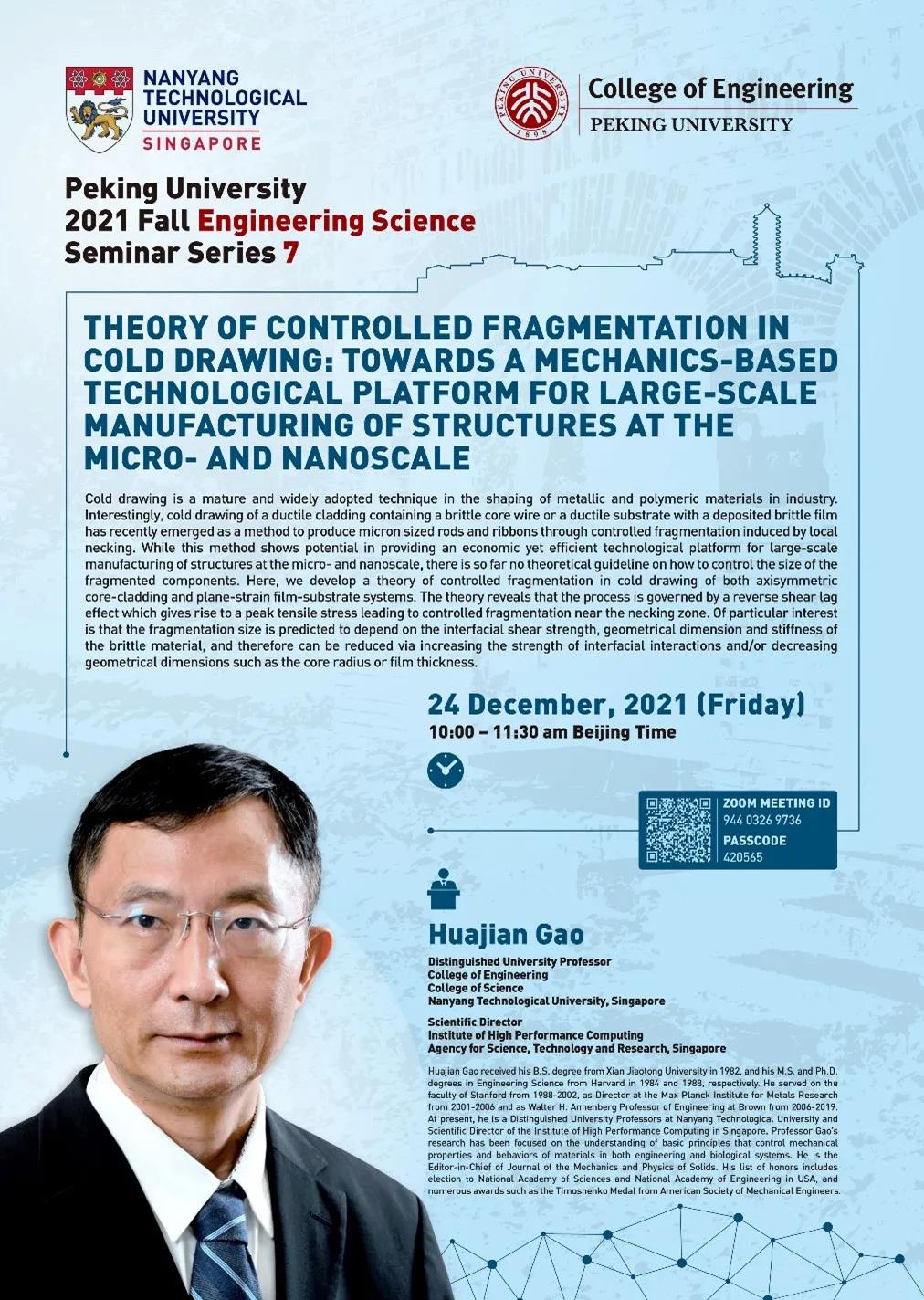[Lecture] Theory of controlled fragmentation in cold drawing: towards a mechanics-based technological platform for large-scale manufacturing of structures at the micro- and nanoscale
Jan. 01, 1970

Speaker:
Huajian Gao
Distinguished University Professor, College of Engineering, College of Science, Nanyang Technological University, Singapore
Scientific Director, Institute of High Performance Computing, Agency for Science, Technology and Research, Singapore
Host: Prof. Yang Wei, PKU College of Engineering
Time: 10:00-11:30 am, Dec. 24, 2021, Beijing Time
Venue: Zoom Meeting ID: 944 0326 9736 Passcode: 420565
Abstract:
Cold drawing is a mature and widely adopted technique in the shaping of
metallic and polymeric materials inindustry. Interestingly, cold drawing
of a ductile cladding containing abrittle core wire or a ductile
substrate with a deposited brittle film has recently emerged as a method
to produce micron sized rods and ribbons through controlled
fragmentation induced by local necking. While this method shows
potential in providing an economic yet efficient technological platform
forlarge-scale manufacturing of structures at the micro- and nanoscale,
there is so far no theoretical guideline on how to control the size of
the fragmented components. Here, we develop a theory of controlled
fragmentation in colddrawing of both axisymmetric core-cladding and
plane-strain film-substrate systems. The theory reveals that the process
is governed by a reverse shear lag effect which gives rise to a peak
tensile stress leading to controlled fragmentation near the necking
zone. Of particular interest is that the fragmentation size is predicted
to depend on the interfacial shear strength,geometrical dimension and
stiffness of the brittle material, and therefore can be reduced via
increasing the strength of interfacial interactions and/or decreasing
geometrical dimensions such as the core radius or film thickness.
Biography:
Huajian Gao received his B.S. degree from Xian Jiaotong University in
1982, and his M.S. and Ph.D. degrees in Engineering Science from Harvard
in 1984 and 1988, respectively. He served on the faculty of Stanford
from 1988-2002, as Director at the Max Planck Institute for Metals
Research from 2001-2006 and as Walter H. Annenberg Professor of
Engineering at Brown from 2006-2019. At present, he is a Distinguished
University Professors at Nanyang Technological University and Scientific
Director of the Institute of High Performance Computing in Singapore.
Professor Gao’s research has been focused on the understanding of basic
principles that control mechanical properties and be haviors of
materials in both engineering and biological systems. He is the
Editor-in-Chief of Journal of the Mechanics and Physics of Solids. His
list of honors includes election to National Academy of Sciences and
National Academy of Engineering in USA, and numerous awards such as the
Timoshenko Medal from American Society of Mechanical Engineers.
Source: College of Engineering
